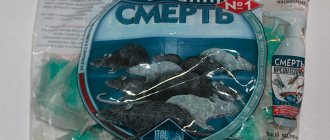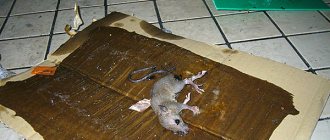Many people are afraid of bats from an early age. And when will this seemingly vicious animal begin to live on the roof of a house or in an apartment? Constant rustling, squeaking and the possibility of suddenly flying into an apartment can create a feeling of fear even in those who have strong nerves.
If there is a concern about mammals, people often ask how they can get bats out from under their roof. There are a large number of methods for breeding bats that help solve the problem.
Preventive measures
About bats
To begin with, there are too many rumors, speculations and artistic images around these animals.
Here are the most common:
- feed on flesh
- drink blood
- bite and transmit infection.
Also, their appearance, of course, evokes emotion in few people. That is why the appearance of bats near a person does not make people happy at all. The reality is that bats living in the European part of Russia are harmless and safe creatures for humans.
What worries us all first is what they eat. So, their main diet is insects, which, by the way, especially bother us, namely mosquitoes, flies, moths, etc. A rare exception in the diet of bats is frogs. As you understand, to some extent, they are even assistants.
There are, of course, species that still feed on fruits. Such “neighbors” can already cause damage to your fruit plantings.
But, as a result, bats definitely won’t eat people and drink their blood.
Naturally, bats still pose a danger to people. Animal excrement is saturated with fungal vapors, which, when entering the human lungs, can cause serious illness. Bat excrement, also known as guano, has a pungent odor, oblong shape, and color from earthy gray to black.
But it is worth noting that this fungus is also present in bird excrement. So, of course, there is a chance of inhaling it from bat droppings, so you must follow a number of rules, which we will describe below. Biting is absolutely not a typical behavior for bats. After all, even if an animal is sick with rabies, it would rather become lethargic and apathetic than rush at people and animals. But if a person is bitten or scratched by a bat, it is better to immediately consult a doctor for vaccination and treatment.
Also, bats can damage the attic space, or the construction materials that are around.
Well, and most importantly, they can frighten the residents of the house with their unexpected appearance.
Although we now understand that they are not particularly dangerous, such a “neighborhood” is unpleasant in any case, to some extent has its consequences, and it is better to get rid of it in a humane way.
Features of bats
Bats belong to the order Chiroptera. But they are not “relatives” of ordinary mice. They are considered primates. These animals are nocturnal, despite their rather poor eyesight, and are perfectly oriented in the dark. Bats emit ultrasound, which helps to accurately distinguish small stones from insects over long distances. It is thanks to echolocation that they move in the dark. Below are some more interesting facts about bats.
- Life cycle. Bats live longer than dogs. On average, the lifespan of a “mystical” animal is 25-30 years.
- Dimensions. Bats, depending on the species, may have different parameters. Some individuals do not exceed the dimensions of a bumblebee in size. But there are also real giants, whose wingspan is 2 m.
- Ancient inhabitants. According to archaeological excavations, bats inhabited our planet approximately 55 million years ago. These animals have been practically untouched by evolution. Their remains are no different from modern individuals.
- Body temperature. Can vary from −7ºС to +48ºС.
- State of numbness. In winter, bats, deprived of the opportunity to get their own food, prefer to do nothing. Goes into a sleep state. This numbness can last up to eight months. The animal independently slows down metabolic processes and lowers body temperature. In the event of severe frosts, they can turn into real “icicles”, but with the arrival of warmth they thaw and continue their life activity again.
Bats breed once a year. Babies are conceived during wintering. The offspring are never numerous. Usually in the summer only one mouse is born. Sometimes two cubs may be born.
Area
These animals choose secluded, dark and completely safe shelters during the daytime. In the wild, they settle in rock crevices, caves, abandoned burrows and hollows, on the slopes of dunes, even in the recesses of walls.
Human activity is leading to the destruction of natural bat habitats. The animals are forced to look for new shelters. They quickly adapt to the new environment and settle next to humans. The winged ones inhabit abandoned adits and mines, attics, cellars, cellars and forgotten bell towers. Uninvited guests can be found in haystacks and on balconies.
Bats are unable to take off from the ground because they have rather large wings. Therefore, they choose places to rest from which they can throw themselves headfirst.
Nutrition and main types
Despite the vampirism attributed to them, most species are quite peaceful and vegetarians. However, not all. Food preferences depend on the type of mouse. More detailed information is provided in the table.
Table - Types of bats
| Species name | Description | What do they eat? |
| White (tailless) | — They have a length of up to 4.5 cm, small ears and an unusual nose; — live in Honduras, Panama, Costa Rica, Nicaragua; — settle in the huge leaves of heliconia, forming a family of 5-6 individuals | Fruits |
| Vechernitsy | — Inhabit North Africa and European countries; - have large sizes (length 10-50 cm); — fly at a speed of 60 km/h; - live in deciduous forests | — Beetles; - butterflies; - small songbirds |
| Fruit (dogs or foxes) | — Live in the forests of Malaysia, the Philippines, Laos, Vietnam; - distinguished by an elongated muzzle; - the body reaches 42 cm, and the wingspan is 1.7-2 m; - settle in trees; - live in huge colonies | - Bananas; - papaya; - grapes; - coconuts |
| Smooth-nosed | - They have a smooth muzzle without any cartilaginous growths; - found in all countries where woody vegetation grows | — Insects; - fish |
| Ushany | - They have large ears; - distinguished by short and wide wings; - the body reaches a length of 5-6 cm; - found in Europe, Asia, North Africa | — Beetles; - butterflies; - mosquitoes |
| Horseshoe bats | - They have a cartilaginous growth in the area of the nose that resembles a horseshoe; — take off immediately after sunset; - hunt only in the first half of the night; - live in the Caucasus | Insects |
| Nightwomen | — Inhabit all countries and continents, except the Arctic; - fly out to hunt in complete darkness; - have a high degree of adaptability, can live in any conditions; - fly calmly and slowly | By night insects |
| Vampire | - They have weak echolocation; - have developed hearing; - have infrared receptors; - inhabit only South and Central America | Blood of birds and animals (sometimes they can drink blood from a sleeping or exhausted person) |
Reasons for appearance
In nature, to create places for their settlement, bats choose dry, dark, high-altitude places, natural depressions - caves, hollows, etc.
Human dwellings, firstly, attract bats with high altitude - this is the reason for the sudden appearance of bats in the attics of residential high-rise buildings, balconies, etc.
Private houses are also tempting - bats choose non-residential premises and spaces because they are dark, dry and quiet - attics of houses, barns, chimneys, etc.
In nature, bats tend to lead an active lifestyle from spring to autumn. Then, the animals either fly away to warm countries or hibernate.
But, since a person’s home is, first of all, an approximately constant temperature, this is exactly what they like, and bats on the roof of a house can continue to remain, multiplying their offspring, without changing place.
That is, they appear in our houses and on roofs only because they are looking for a reliable place for breeding offspring and further life.
And, it should be remembered that they arrive in whole colonies at once, and not in separate “pairs”.
Why are bats dangerous?
Based on the characteristics of the diet of bats, it is difficult to classify them as a pest. After all, the animal mainly feasts on those insects that harm crops and gardens. In this regard, bats even benefit summer residents and gardeners.
But these mammals also have negative factors that can be called dangerous:
- Smell and dirt . Bats actively fill their habitat with excrement, which depletes the stench.
- Carrier of infections . Bats are carriers of many dangerous infectious diseases.
- Allergy . Animal feces contain a lot of pathogenic microorganisms that provoke the development of serious allergic reactions. And constantly inhaled air containing microparticles of bat waste can cause histoplasmosis, a lung infection.
- Damage to home . Mice, having settled in the attics of houses, can chew through the waterproofing and spoil the insulation.
- If bitten, there is a risk of contracting rabies.
How to understand that bats have settled under the roof
- The first and most obvious thing is that you will see them . Bats are nocturnal and sleep during the day. You can see them in the evening or at night, that is, just when they begin to fly out for food or to drink.
- You will hear them . It is at night that bats squeak, scratch, and rustle, which can disturb the peace of people. Since bats can penetrate into a gap of about 1.5 cm, bats can even live under the façade cladding.
- excrement emit an unpleasant odor, which, in addition to the usual discomfort, can also pose a threat, which we mentioned above. Besides the smell, the amount of droppings is always very large, so when looking for bats, the first thing you will see is a large amount of droppings.
Chemical methods of control
This method involves the use of special chemicals aimed at repelling bats. They should be used when animals leave their home in search of food. When choosing products, they rely on their ease of use, the number of mice living in the attic or barn, and the price.
- Special repellents. Animal habitats and openings through which they enter the room are treated with aerosols.
- Mothballs. The smell of mothballs repels bats, and over time they leave their favorite place. Since the smell dissipates over time, the procedure should be repeated.
Bats are extremely sensitive to its intrusive odor.
Important! Naphthalene is a hazard class 4 chemical whose vapors pose a threat to human health. The placement of this chemical in residential areas is prohibited.
Naphthalene can be a real help in the fight against bats.
How to get bats out of your roof
So, you found out that there are bats under the roof, and now you are tormented by the question of how to get rid of them.
The very first and most important thing you should know.
IT IS STRICTLY PROHIBITED to poison bats with any poisons or pesticides. There are a number of reasons for this.
- Bats are an important part of an entire ecosystem. They belong to the category of rare animals, and perhaps many species are listed in the Red Book, which means they are protected at the level of the Law . But, first of all, it is too cruel.
- Poisoned animals can climb into secluded, hard-to-reach places, die there, their bodies will decompose and there will be even more damage from the dead animal.
- If an adult is poisoned, and there are already cubs, the adult will die, and the cubs will die just as long and painfully, this time from hunger. Bottom line - see point above.
Now that it’s clear what exactly shouldn’t be done, let’s figure out how to get bats out of the house.
Just coming, driving everyone away and sealing all the cracks will not work. Firstly, if not all the cracks have been found, the mice will return. And if, nevertheless, the cracks were carefully sealed, but someone remained (for example, offspring that do not yet fly), the animals will die and will emit a smell.
In order to select (or try) remedies, you need to know the most important facts about bats.
| Find out exactly where they live. The average size of a bat is from 3 cm to 10 cm. This means that they can penetrate through any gap ranging in size from 1-1.5 cm. Accordingly, this can be not only a large spacious attic, but also ventilation passages, chimneys, etc. |
| Determine a more or less accurate number of bats. At this point, the matter is complicated by the fact that the adults are already flying, and the young are sitting in one place, and it may be hidden from view. |
| The choice of method depends on the season of the year. No matter how much you would like to smoke out uninvited guests, it is important to understand at what time of year this is not possible, and it is useless to do so. Definitely, you should not try to drive bats out from under the roof, in summer and winter. In the summer, the offspring hatch and the cubs will remain, but in the winter, this is inhumane, and the bats will die. It is better to carry out all manipulations in the fall. When the bats in the attic of the house have already hatched their offspring and they can fly. |
So, autumn has come, and you are ready for decisive action.
When you need to call special teams
If all the methods tried have not brought the desired result, and the number of breeding individuals is growing exponentially, you should contact the sanitary and epidemiological station for help or call a special team that deals with pest elimination. Experts know how to effectively get rid of mice in the attic, in the shortest possible time and using absolutely legal methods.
If the above methods do not solve the problem with flying individuals, then the only quick option for removing mice is to call a special sanitary service.
The main problem created by small attic inhabitants is the possibility of a person becoming infected with various diseases from bat bites. They themselves do not attack humans, but when trying to drive them away from their homes, bats can bite.
If you are bitten by a bat, you must immediately seek medical help and get vaccinated.
The most common diseases that these creatures carry are the following:
- Histoplasmosis is a dangerous disease caused by a fungus that affects the respiratory tract. Birds and bats spread it through their excrement.
- Rabies. Infected bats live only a few days, but the likelihood of a bite during this period still exists.
- Ebola and Marburg viruses. According to official data, the main focus of the spread of the virus is Africa, but precautions are never superfluous.
You should protect yourself from direct contact with bats.
Additional Information. Special services will take measures to remove bats and also disinfect the premises with special preparations permitted by law. This will allow you to get rid of intrusive inhabitants for a long time.
SES workers have modern drugs and equipment.
Preparation
Getting bats out from under your roof is a serious process and requires advance preparation. First of all, you need to prepare yourself. Here are some important rules that MUST be followed.
| Get dressed You need to wear thick clothing that will cover your entire body. In your arms be sure to wear thick gloves. On the head - thick hat. Bats that are frightened and disturbed may accidentally scratch or bite a person. |
| You must wear a respirator on your face Animal feces emit a pungent and unpleasant odor, plus, remember about harmful fumes. Be sure to wear protective (preferably construction) goggles on your eyes |
Method one - observational and handicraft
During twilight and night time, look for areas where bats enter the attic.
When you see that the mice have flown away to hunt, use any available methods to seal the entry points. Depending on the hole, you can use boards, tape, etc. It is better to use polyurethane foam later.
Remember, bats hunt once every few days. Therefore, the next day, open the entry point so that those who have not yet flown out will fly out.
After repeating this procedure for a week, making sure that now all the bats have definitely flown out, you can seal the holes more seriously - with polyurethane foam, sealant, etc.
Method two - natural and safe
There are also longer options, which may not be entirely effective, but they are safe.
Treatment with water, light and wind.
| For this method, you need to come to the bats during the day , when they are all together and sleeping. As we said above, bats prefer dry and dark places. You can water the animals with water from a hose with a diffuser nozzle (in this case, you can flood the attic), or simply spray them with water from a spray bottle. They won't like it and will fly away. |
| Also, we remember that bats do not like bright light. By directing a source of bright light at the attic inhabitants and leaving it there for a couple of nights , you can encourage the bats to fly away. |
| This method is also “daytime”. o leave a fan turned on and aimed directly at the bats. Theoretically, they won't like it and will fly away. |
The three methods listed above are good, but the likelihood that the bats will not return is not very high.
Method three - smoking and smelling
If bats are not in sight, or for some reason there is no desire or opportunity to waste electricity, water and time on these methods, there are still options.
| To literally smoke bats out from under the roof, smokers are used. If you don’t have a smoker, then an iron can will do, in which you will start a fire. Follow fire safety rules! The premises are treated with smoke over several days. The room fills with smoke and the bats fly away. However, the smoke clears quickly and the bats may return. And, it is important not to overdo it with the amount of smoke, otherwise people’s health will be at risk. |
| We use this method and do it at night, when there are no bats. Another well-known folk method of fighting bats is naphthalene. Sold in specialized departments. Mothballs can be in balls, tablets, flakes, bags and even sticks. Naphthalene, if it is in crumbly form, is sorted into bags (or we take ready-made bags of mothballs) and hung in places where bats gather. The procedure is repeated several times. The bags are changed once every 2 days because the smell weakens over time. Bats cannot stand the smell of mothballs and will fly away. BE CAREFUL! Naphthalene has a very pungent odor and you can only work with it in a respirator, and certainly not hang it in residential areas. |
Method four - dubious and controversial
There is information that special sprays and ultrasonic repellers for rodents are also used. But the effectiveness of these methods is also not 100% guaranteed.
| Sprays are purchased in specialized departments. It is prohibited to use sprays with toxic ingredients. The main idea is to drive away the bats, not kill them. The spray is sprayed during the ABSENCE of bats. Upon their return, a sharp, unpleasant smell will “wait” for them and they will fly away. |
| Ultrasonic repellers emit waves at frequencies inaudible to the human ear. That is, theoretically, bats and other rodents hear them, experience discomfort and leave. For humans and pets, this device is absolutely safe and invisible. Convenient if the habitat of bats has not been identified or is difficult to access. The device can work around the clock. |
Effective methods of control
There are many options explaining how to get rid of bats in the country. Choose a control method based on the simplicity of the method and the number of individuals living in the country.
Chemicals
The use of such products is not recommended. Remember that bats are protected by law and it is better not to destroy them. Bats can also get trapped in a crack and die in a hard-to-reach place, emitting a foul odor as they decompose.
Therefore, when choosing a pesticide, give preference to aerosols. For example, 876 4-Pack BatRepellent, which includes peppermint. The product is sprayed on the habitats of bats (strictly in their absence). The smell of chemicals will scare away the animals.
Use chemicals only in non-residential areas where there are no pets. When working with drugs, do not forget about personal protective measures (masks and gloves).
Repellers
To find out how to get rid of bats in your country house, consider using special devices - ultrasonic repellers. This is a safe and effective method. When operating, the repeller emits ultrasonic waves with a frequency of 35-60 kHz. They are not detected by humans and are harmless to them. But mice are sensitive to radiation and cannot tolerate it.
Using the device is simple - it is connected to a power outlet and the operating mode is set. After 1.5-2 weeks, the bats will leave their homes.
Among the most effective repellers are the following:
| Name | Description | Features of work |
| Tornado-200 | safe for humans and pets, operates from a 12 V voltage source | the ability to change vibrations prevents mice from becoming accustomed to ultrasound, the device operates within a radius of 200 m |
| Yastreb-300 | operates from a 220 V power source and requires the presence of an outlet in the house | range 300 m |
| Weitech-0300 | There is a mode for switching the oscillation frequency, it is also effective against ordinary rodent pests, it requires a voltage source of 220 V | effective in operation and expels mice in 10-12 days |
| Grad A-1000 PRO | equipped not only with ultrasound, but also with the effect of light flashes, which increases its efficiency, operates from a 220 V current source | has 4 operating modes and operates within a radius of 100 m |
In rare cases, ultrasonic repellers can trigger migraines in people with high sensitivity. Therefore, it is better not to stay within the range of the device for a long time.
Traditional methods
Study time-tested folk methods that explain how to get rid of bats in the country.
What means do you use to fight bats? Folk repellents
All these methods are absolutely safe and do not require material costs:
- Water . Chiropterans do not like humidity and will never settle in damp places. To expel mice, you need to spray their holes with water daily.
- Naphthalene . The animals have an excellent sense of smell and cannot tolerate strong odors, which include naphthalene. In order to combat uninvited guests, mothballs or pieces are laid out in their habitats (they are first placed in gauze bags).
- Light . Chiropterans will never return to their burrows unless it is dark. Place several powerful light sources in such a way as to illuminate the mice’s hiding places, and after 2-3 days the animals will leave this area.
- Polyurethane foam . It is needed to tightly seal all the cracks possible for penetration. But be sure to make sure that there are no animals in the holes, otherwise it will be extremely difficult to get rid of the stench later if the mice die in closed places.
- Smoker . Chiropterans cannot tolerate the smell of smoke. To smoke animals from your favorite territory, use a smoker for 2-3 days.
- Fans . Try using a fan as well, directing the air flow into the mouse den.
- Loud sounds . Although this method has not been proven to work, try scaring away a family of mice with the sounds of loud music.
Expert opinion Mityuk Stefania Bogdanovna If all methods have been tried, but stubborn bats do not bother to leave their homes, contact specialists. Professionals will explain how to get rid of bats in your dacha and help you with this. SES representatives have all modern equipment. They will quickly and reliably get rid of bats.
Room treatment
Hooray! Not only have you learned how to get bats out of your roof, but you've successfully done it! With a high probability, the entire room where the bats lived is filled with a bunch of excrement and now it is necessary to properly clean and treat the room.
Here are some important rules.
| As always, there are special requirements for clothing. Whole body securely covered with thick clothing. On hands - thick long gloves. On the head is a thick hat. on our eyes . A respirator is a MUST for respiratory protection! |
| All detected excrement, also known as guano, must be moistened with water. If this is not done, during cleaning they will become very dusty, and we know that dust from guano is the most dangerous and harmful consequence. |
| Pre-moistened excrement can be carefully removed - with a broom, broom, etc., whatever is more convenient for you. |
| The cleaned room must be thoroughly disinfected. To disinfect the premises, specialized products are purchased from the relevant departments. You can do this yourself, but it’s better to call a specialized service that will disinfect the premises efficiently and correctly. |
If you have tried everything, but the bats remain under the roof of the house, or in other secluded places, there is another option.
Call the professionals. They already have experience, specialized equipment and means with which they will carry out partial and complete cleaning of the desired location. The only surprise that may await you in this case is that you may need to completely or partially dismantle the place where bats live - the roof, the eaves, part of the wall under the cladding, etc.
Application of electrical appliances
Particularly popular are special electrical devices that affect bats using ultrasound. Sound waves of variable frequency through the hearing organs have an effect on the nervous system of animals, so they leave their habitats. The effect does not occur immediately, it usually takes two or three weeks.
The ultrasonic bat repeller acts quite humanely towards the animals.
The devices differ in some characteristics:
- by purpose: for animals, insects or universal;
- by installation location: indoors and outdoors;
- by mounting method: stationary and wall-mounted;
- by impact: with different frequencies.
- according to the zone (area) of the device.
A device that emits ultrasound waves repels critters from the attic and prevents them from returning.
Important! Such devices are completely safe for people, since humans are not sensitive to sound waves in this range. But if you have pets, you should remember that the effect of the device will also apply to them. It is recommended to isolate pets during installation of the device.
May-July is the breeding season for bats, so it is recommended to get rid of bat colonies either before May or after July.











